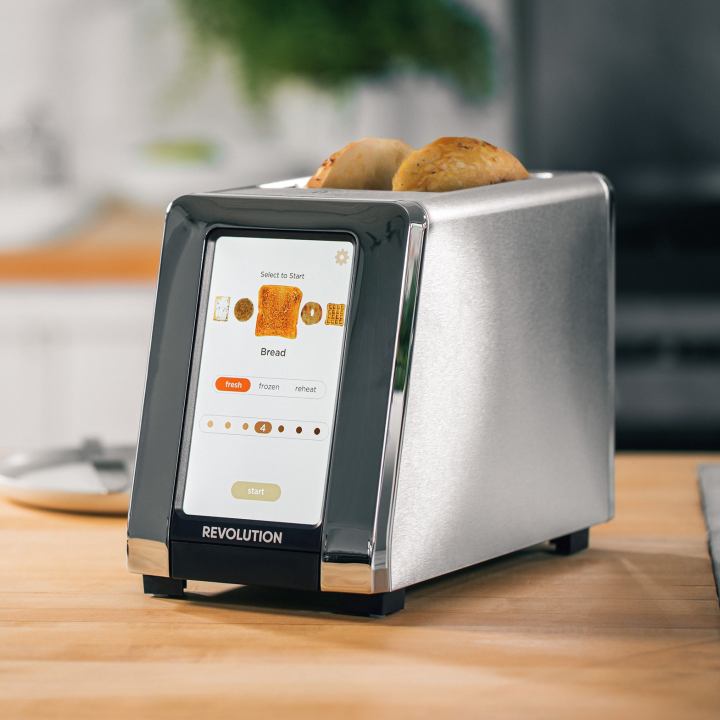All kinds of gadgets have added smarts: smart water bottles that track how much you drink to monitor hydration, and even self-cleaning smart toilets that can even detect signs of disease. In the kitchen, we also have cooking robots that can autonomously perform all the tasks needed to make a meal (up to and including cleaning themselves), and smart faucets that can measure precise amounts of water for baking and cooking and operate entirely hands free. But what are we to make of a smart toaster?
Alongside boiling water and making Jell-O, using a toaster ranks as one of the simpler kitchen tasks. So, why would we need to make that more autonomous, or “smart”?
Is a smart toaster worth it?

The truth is we don’t need smarter toasters, but a smart toaster, like a smart water bottle, does have its merits.
There are two smart toasters we are aware of on the market: The Revolution InstaGLO and Tineco Smart Toaster. I reviewed the Tineco version, and I can say it’s a beautiful, premium-looking gadget, with an LED touchscreen and the ability to simultaneously toast two slices to two different levels of doneness, which an average department store toaster just can’t do. The Tineco can also use preset toasting modes to adapt to varying types of bread, and save favorite settings for multiple family members. Revolution InstaGLO offers many of the same features and was the first out of the gate in the smart toaster race.
So back to those merits. Once you’ve set your toaster preference, I guess you could simply pop in the bread and walk away, though you could technically do that with a regular toaster once you’ve determined your favorite setting. Cooking two slices differently at once might be nice, but are we all actually in need of that feature? Particularly since dropping two sets of toast into that spring-loaded griller would only take a minute or so longer. The more I think about it, the more I’m struggling to justify a smart toaster as anything but a novelty.
What’s the biggest problem with a smart toaster?
The biggest issue most people would have with a smart toaster is not its usefulness or how fun it might be — it’s the cost, since adding that LED touchscreen and enabling dual synchronized or disparate cooking doesn’t come cheap. A smart toaster costs around $350. Compare that to the cost of a regular toaster that runs between $25 and $50, and you’ll see you’re adding limited usefulness for a lot more cash.
A smart toaster would be a great (if lavish) gift for someone who really likes their toast, but most of us don’t come anywhere near needing this much support darkening baked bread. Yes, in the realm of novelty gifts, this is a pricey one, meaning it’s out of reach as both a gag gift and as a legitimate kitchen appliance for the vast majority of us.
In short, the smart play is not for the smart toaster; it’s with saving hundreds of dollars to be used on other truly smart home gadgets, technology, and appliances.
Are other smart kitchen gadgets worth it? Read up on our list of other smart kitchen options, or see if a smart BBQ makes grilling easier.



